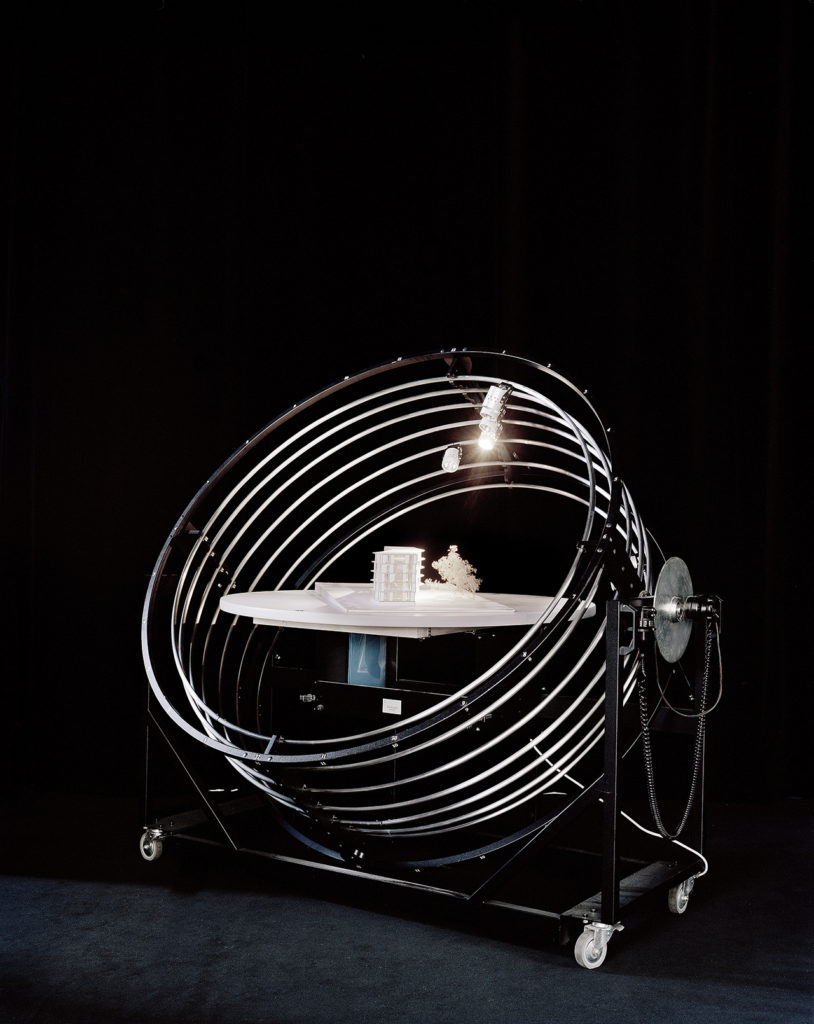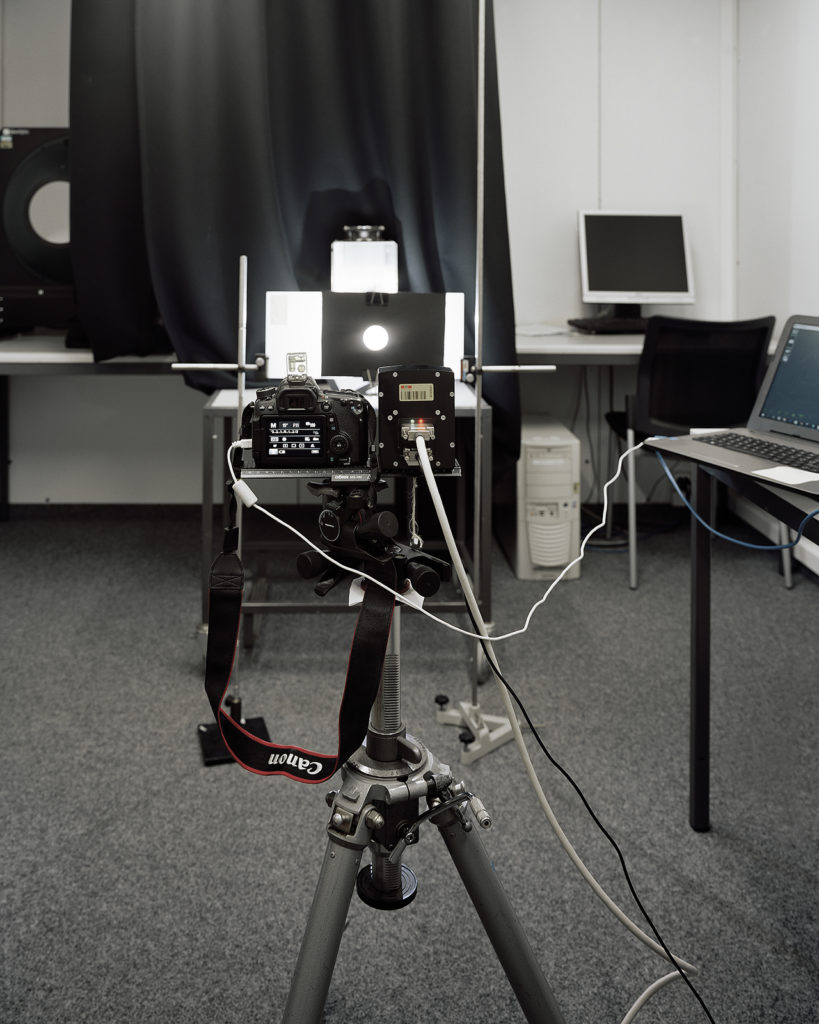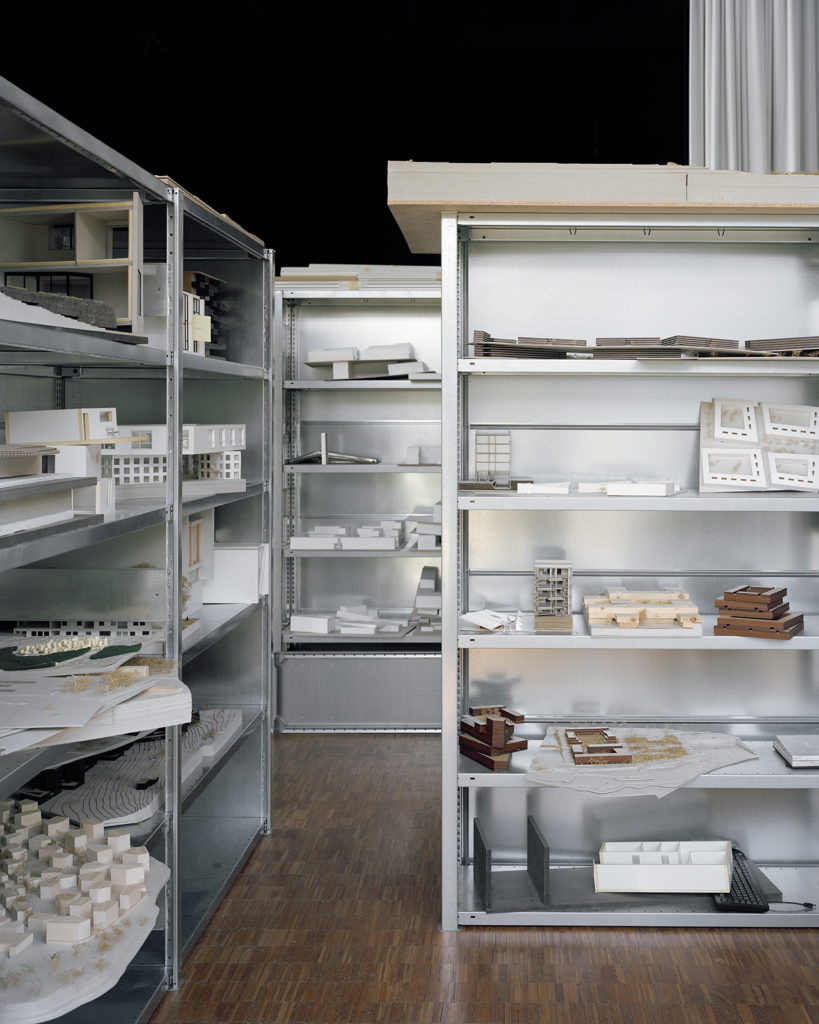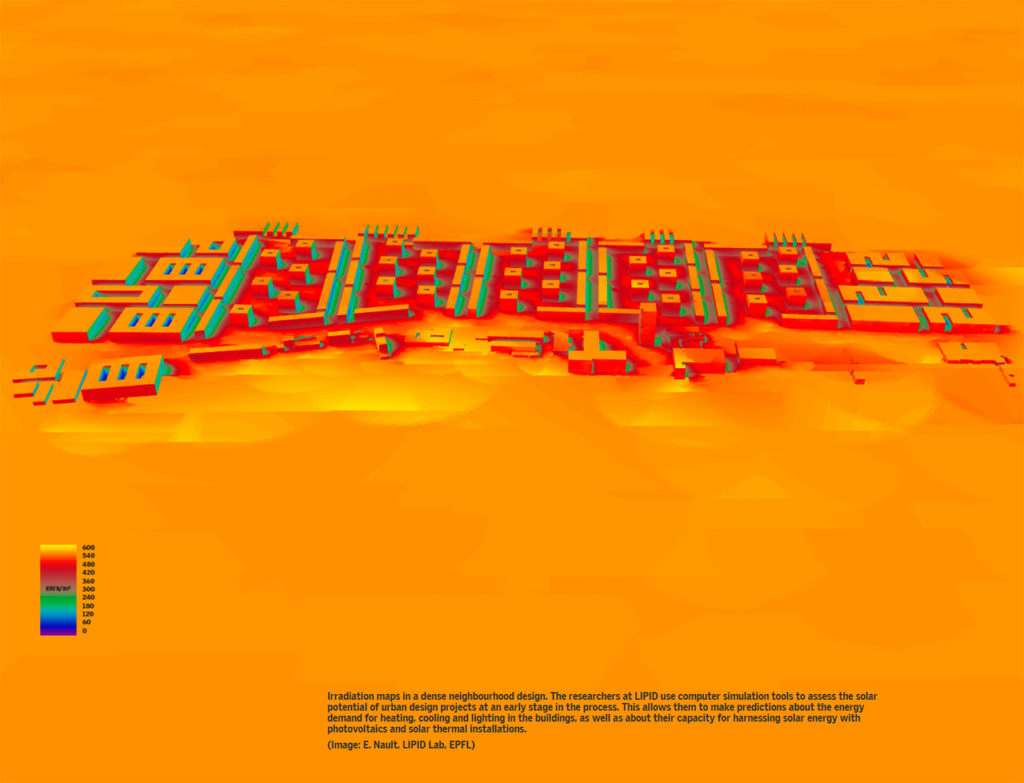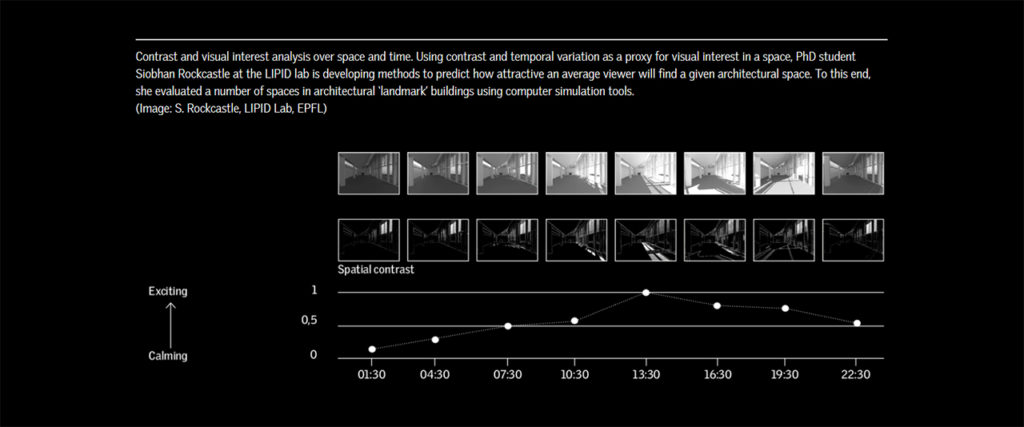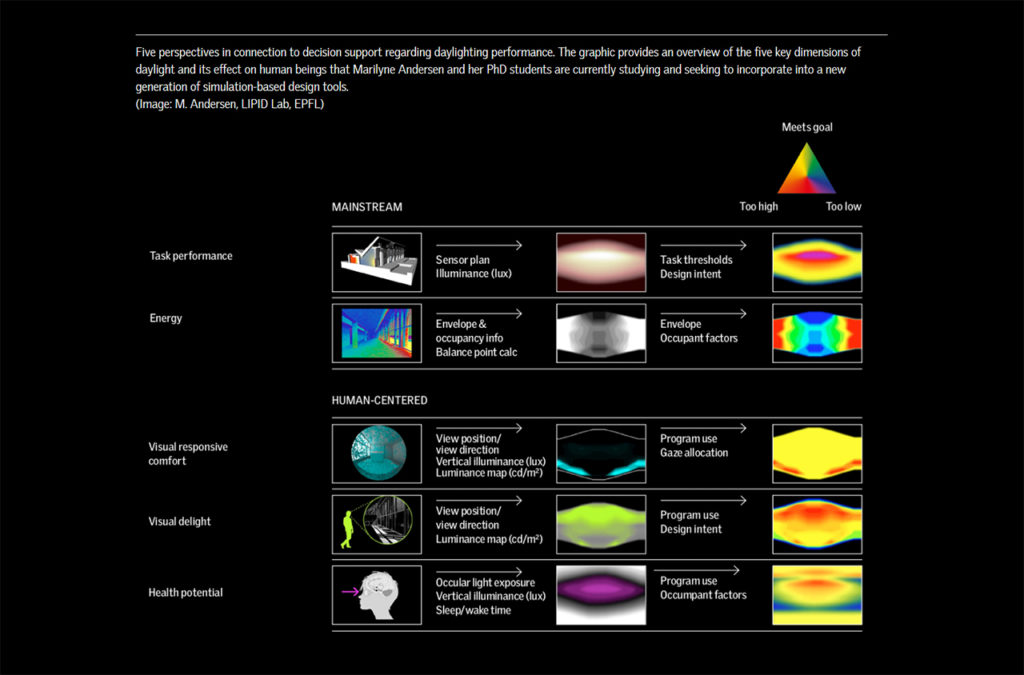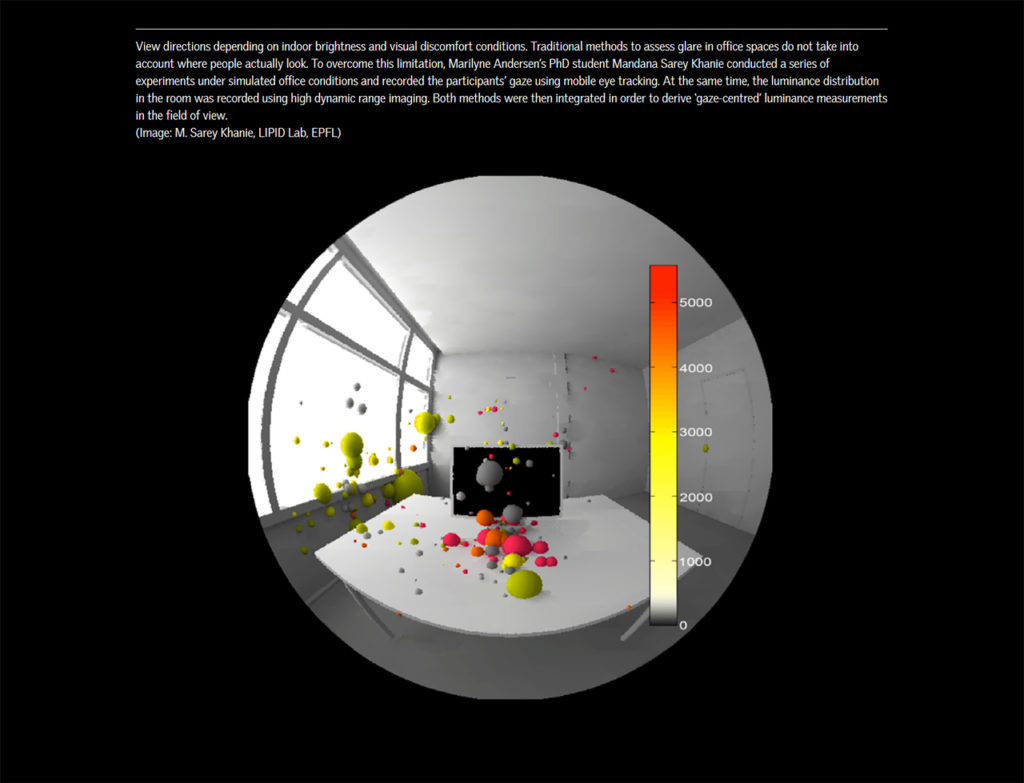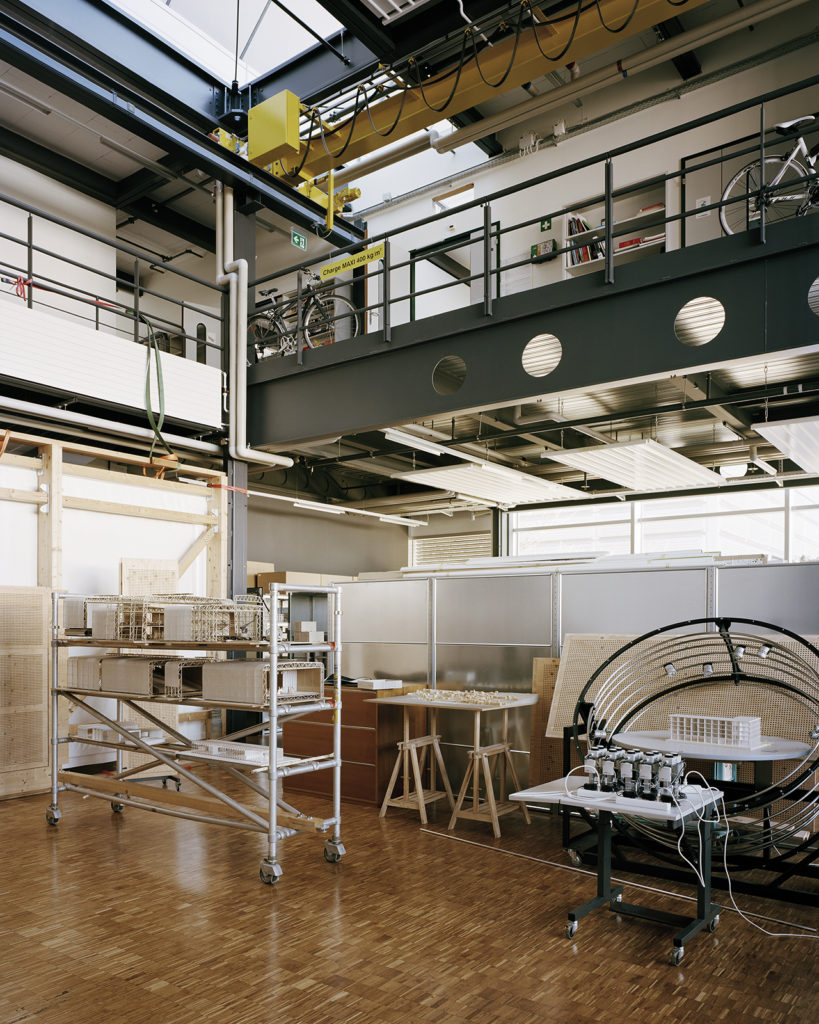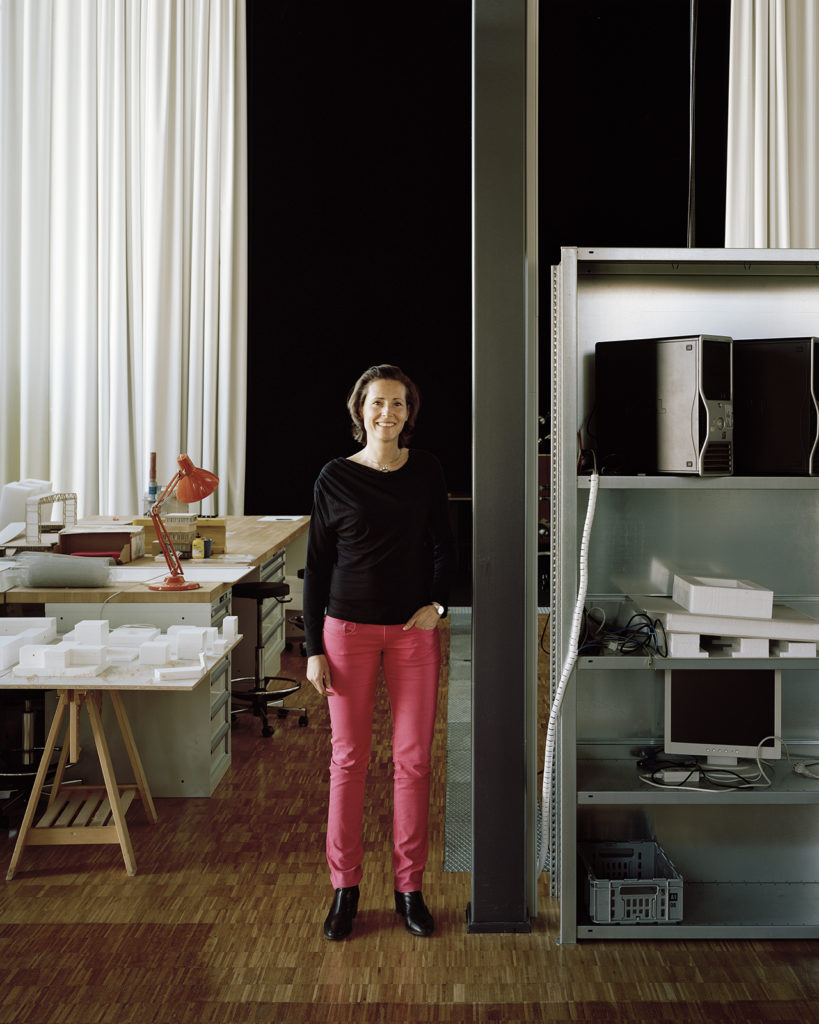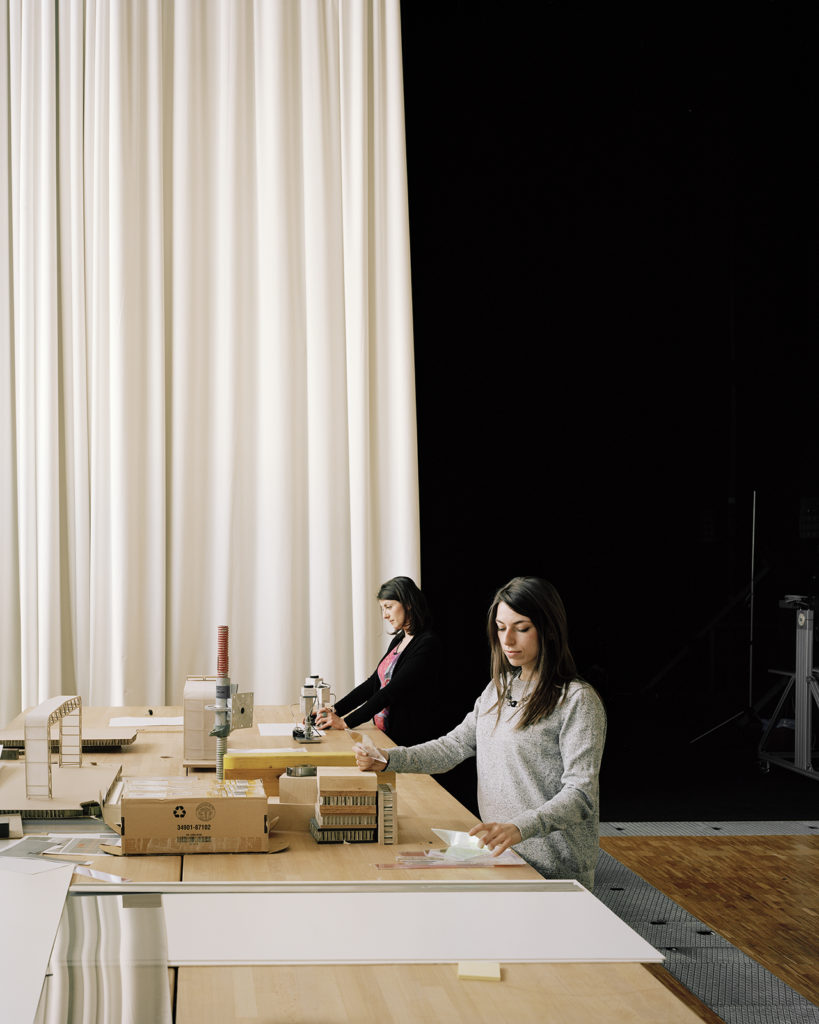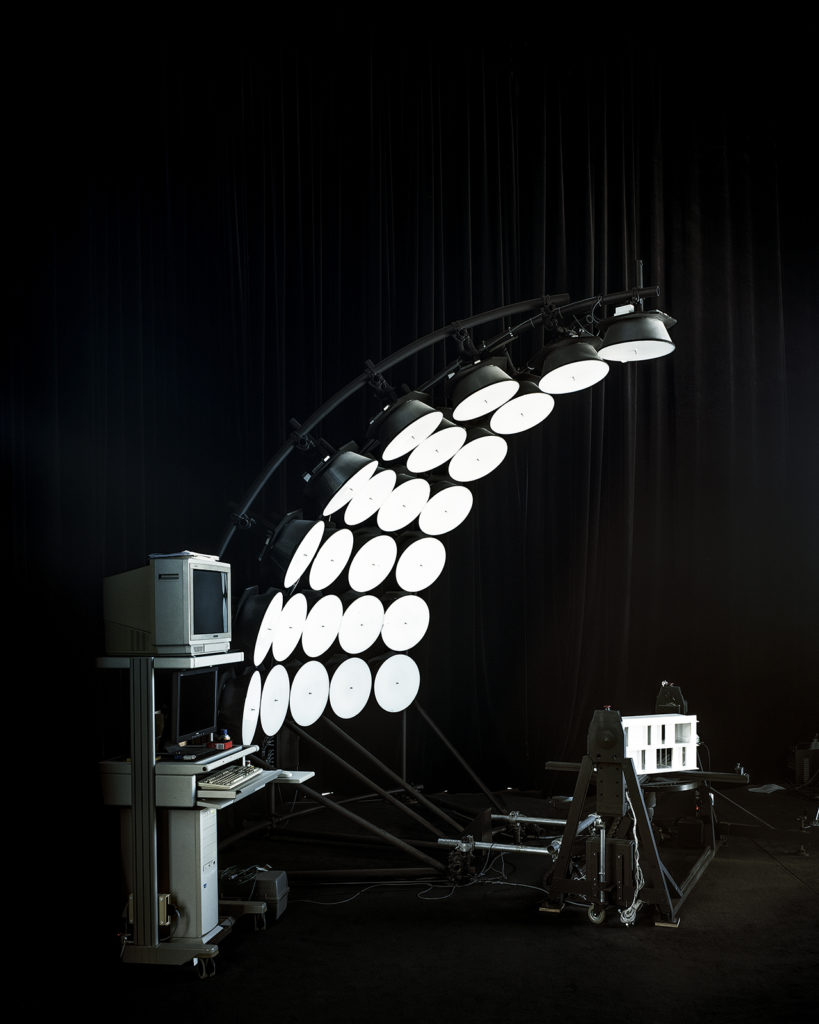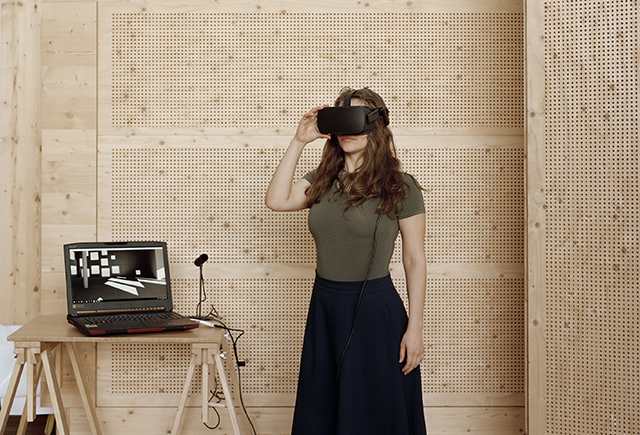
by Jakob Schoof | Photography by Rasmus Norlander
Marilyne Andersen is currently rated one of the world’s leading daylighting experts. Together with her research team at the EPFL in Lausanne, the physicist has devoted much of her work to studying how natural light affects humans and how this intensely dynamic interaction can be better incorporated into the designs of buildings. In November 2016, Marilyne Andersen received The Daylight Award for Daylight Research for her work in this field.
Daylighting design is an art of mediation: between the specific daylight conditions on a given site and the comfort requirements of the building users, between qualitative design goals and measurable physical quantities, and between the different levels on which daylight influences human beings. Natural light has both visual and non-visual effects, it can cause glare and influence thermal comfort, it regulates our sleep/wake cycles and it has a significant influence on our appreciation of the quality and attractiveness of a space.
Reconciling these different aspects can be a lifelong task. Marilyne Andersen has devoted herself to this mission. Born in Switzerland, with a significant portion of her academic career spent in the United States, she is considered one of the leading daylighting experts of her generation. She is currently Dean of the School of Architecture, Civil and Environmental Engineering (Faculté Environnement Naturel, Architectural et Construit/ENAC) at the EPFL in Lausanne. Interdisciplinary thinking is a fundamental ethos at this particular school: natural scientists and social scientists, environmental and civil engineers, architects and urban planners train the students in all matters affecting built and natural environments. Many topics are taught in interdisciplinary courses.
As a researcher, Marilyne Andersen has always aimed to facilitate the close exchange between different disciplines. When she first began her studies, she wavered for a long time between her two favourite subjects: physics and architecture. “I liked to draw and I even thought I would create comic books to educate about science. The job of an architect didn’t really appeal to me, however, so I decided to do physics instead. But at the end of my physics degree everything was equations and nothing was physical, and I wanted to go back to architecture. So I went to the Solar Energy and Building Physics Laboratory (LESO-PB) at the EPFL, which offered semester projects in building physics, and the most architectural one they offered was on daylighting. This is what first got me into this subject.”
Marilyne Andersen has remained true to her specialist area, conducting research into topics linked to daylighting in both her master’s thesis and her PhD. This was followed by a professorship at the Massachusetts Institute of Technology (MIT), before she returned to the EPFL in 2010. “The field of daylighting is extremely diverse. It deals with perceptual aspects, aesthetics and health, and has links with psychophysics, neuroscience and computer science. I find this interdisciplinarity very appealing.”
In recent decades, interdisciplinarity has increased as the focus of research has shifted. “Research on daylight in architecture started in the ‘70s and was very much driven by energy issues at the time. People were mainly concerned with how to replace electric light with daylight in order to save energy. In the meantime, the subject has evolved to include many other aspects of daylight – from physical and mental well-being to connections to the outside, to temporal aspects, and to the weather-dependency of daylight. These aspects are less measurable and thus less comfortable to work with. But I find them more interesting than questions about energy, which, to me, tends to reduce the benefits of daylight to an intake of heat and illumination, whereas, in reality, it is much more than that.”
Since a new photoreceptor in the eye was discovered in 2002, the health aspects of daylight in particular have gained increasing attention. “This is where daylight can have most impact. Good daylighting might save a few percent in terms of energy costs, but what proportion of the overall building cost does this represent? Almost nothing. In terms of wellbeing, productivity and health, however, daylight can make a huge difference.”
Learning to respect others
When Marilyne Andersen was elected Dean of the ENAC in 2013, she was not just the first physicist to hold this post in a school regrouping architecture, civil and environmental engineering, she was also the first woman and by far the youngest dean in the history of the EPFL. As head of a faculty of about 800, with more than 60 professors and research laboratories focusing on subjects that range from architectural theory to environmental toxicology, Marilyne Andersen has her own view on how interdisciplinary cooperation functions. “A lot of people are involved in designing a building. This can be compared to a long chain where everybody holds hands, receiving information from the previous person and passing it on to the next one. If the whole chain is organised in a linear manner, progress is very hard. One person who lets go of one hand by stepping forward is sufficient to break the chain and make the project grind to a halt. Furthermore, it can be difficult to move all the disciplines into the same direction at the same time. In my opinion, the chain should be organised more like a circle, where each person talks to another. The architect still remains the ‘master of ceremony’ but he is probably not the only decision-maker. If he establishes a dialogue with the other stakeholders early in the design process, then the design might also be influenced by the structural engineer or the energy consultant. This kind of collaboration will make the proposal more viable and the chain will be easier to deal with afterwards.”
The people involved in the process do not necessarily have to be all-rounders. For Marilyne Andersen a deep knowledge of one’s own discipline is of primary importance. This should be combined with the ability listen to other disciplines, while not necessarily speaking their (specialist) language. Respect for the skills and capabilities of the other planning partners and a willingness to regard partners as equals is indispensable. “What is important is that people stay strong in their own discipline, because if everyone becomes a generalist, you don’t get anything good. On the other hand, people have to be comfortable with dealing with others who don’t speak their language. Learning this is very important and has to happen already at university. We teach our students to accept interdisciplinary collaboration as an interesting challenge, get familiar with it and consider it an enrichment to have someone with a different background collaborating on the same project. This mind-set enables them to achieve things that they could never have achieved alone.”
Similar prerequisites also apply to the teaching staff at ENAC. According to Marilyne Andersen, they need a sort of ‘T-shaped’ qualification: “We need disciplinary depth but teaching at ENAC also requires an open mind and curiosity towards other disciplines to build ties and develop new ideas at the interface of domains.”
Contrary to faculties at other universities, ENAC introduces interdisciplinary collaboration early on in undergraduate education. In the second year, all students – architects, environmental engineers and civil engineers − take a one-week intensive course together, co-taught by professors from different disciplines. “They are faced with a problem that they couldn’t solve alone and for which they have to combine their skills,” says Marilyne Andersen. “This is usually a quite successful venture for the students. It’s hard to organise, but it’s highly enriching. We repeat it in a different format in the third year, with one afternoon per week over a semester, where they also collaborate on a project in order to foster this exchange.”
Many paths lead to better knowledge
In her career as a researcher, Marilyne Andersen has acquired extensive expertise in dynamic daylight simulations. In her own teaching, she focuses keenly on simulations to give students a better understanding of daylight. But this year she will be expanding her repertoire to take account of other, unquantifiable properties of light. “We will use physical models to explore the qualitative aspects of light, supported by simple tools like the heliodon to understand and anticipate sun courses and shadows. We will use photography and drawings to capture a lighting atmosphere that the students then try to recreate in a physical model. Afterwards, they photograph the model and use this as the objective to attain in a computer simulation.
The experience of actual, built space allows us to better understand the connection between numbers and actual conditions in terms of glare, illumination levels, views out and other daylight-related aspects. Rather than saying ‘I need 300 lux on the work plane’, the ambition is to imagine a specific atmosphere in a space and then try to turn it into reality.” Subsequently, the lighting scenario is validated through a quantitative, simulation-based approach.
In Marilyne Andersen’s opinion, simulations are especially suitable for anticipating the dynamic changes in the levels of daylight – something no other approach can achieve – and for making quantitative predictions. “There have been many attempts to make simulations usable at early design stages. This is difficult, however, because it requires decisions that cannot readily be made and an accuracy that is hard to achieve early on in the process. Physical models, by comparison, allow a straightforward approach to assessing the qualitative aspects of light. They are almost useless, however, when it comes to quantitative evaluations and are very limited in how representative they can be of reality, especially regarding variability and dynamics. Simulations are thus ultimately the answer to enabling advanced daylighting studies and have capabilities far exceeding assessments of sensor plane illumination. Their potential is also huge in terms of perceptual effects if approached properly.
Research beyond disciplinary boundaries
In 2004, as an assistant professor, Marilyne Andersen founded the Daylight Lab at MIT. Six years later, she created a research group with a similar spirit but a slightly broader scope, called the Interdisciplinary Laboratory of Performance-Integrated Design (LIPID) at the EPFL. “At MIT, I had developed a keen interest in connecting with other disciplines, particularly from the field of health, such as photobiology and neuroscience. Even though I had been educated as a natural scientist, trying to understand each other was difficult but very enriching. In Lausanne, I wanted to continue to have a lab that could reach out to other disciplines. I had become very fond of daylight in its multiple aspects, particularly the human-centric ones. I was also interested in the ability to communicate building performance in a graphic and intuitive way. This can go beyond daylight as such. Nonetheless, daylighting remains the core that visual comfort, perception, and health all relate to.”
Marilyne Andersen is currently supervising nine PhD students in her laboratory. Four more PhD students have completed their dissertations in the last two years. If you look at the topics in more detail, it is striking how much they complement one another and create a central research agenda. “Most of our research is driven by questions we want to ask ourselves. We apply for funding, of course, with institutions such as the National Science Foundation or the VELUX Stiftung, but are not doing any commissioned research at the moment. So no one is telling us what research topics to take on board. Defining a theme for a PhD student is a delicate balance, of course: on the one hand, there has to be a certain coherence in the lab and its research agenda, but on the other it is important that the PhD students take ownership of their projects and that the projects reflect their preferences and what they are best at.”
Currently the LIPID researchers are investigating the effects of daylight in four different fields – comfort, perception, health and energy – as well as the interdependencies between these fields. “We do this on the human scale but also on the neighbourhood scale,” says Marilyne Andersen. “A common denominator of our work is that we work a lot on decision support, aiming to visualise performance and provide designers with the information that enables them to understand what is happening in a building or room, and then make the right decisions.”
To this end, Marilyne Andersen and her team are currently working on further developing a daylighting simulation program called Lightsolve. The software was originally created in 2008, but researchers at LIPID have since completely reprogrammed it and added new functions. The program makes it possible to explore daylight in rooms in both its spatial and temporal dimensions. As the user moves through the virtual space, the renderings are updated in real-time. The results can be displayed both in absolute and relative values (compared with a design objective which was specified a priori).
One new element of the updated version of Lightsolve is the number of dimensions of daylight that the program can now simulate. The software does not just determine absolute light levels in a room, potential glare effects or overheating risks, but can also show representations of visual interest – especially driven by sunlight spots and high contrast areas – and of health potential. This is achieved through a novel model that embeds findings from photobiology into a lighting simulation workflow.
Deriving evidence from built reality
Anyone attempting to tackle these questions will inevitably have to deal with numerous unknowns. “The arousal effect of daylight as well as its potential benefits to health depends on a large number of variables, such as the illumination level at the eye, the time of day, the spectral composition, and even the ‘history’, i.e. what kind of light in what amounts the person has been exposed to in the previous hours and days. These factors can vary from one individual to another, due to inter-personal differences (e.g. the sleep-wake cycle) but also to behaviour, interactions with one’s environment and preferences. The probability of glare, on the other hand, depends not just on the overall brightness and contrast in a room but also on where a person is looking and thus where he or she is drawn to look. In a test room experiment, we have therefore tried to find out where people typically look in an office space, performing a range of office tasks in various lighting conditions. Not surprisingly, they tend to look away from their computer screen for non-screen-intensive tasks (e.g. thinking) and be attracted to bright areas like the window, except when the latter generates extreme brightness conditions.”
When assessing daylight pattern preferences, LIPID researchers use mainly two parameters: the contrast between light and shadow and temporal variation, both also taken from a compositional perspective. “We are currently validating this using virtual reality headsets where we display different lighting situations in a space and ask a number of test persons to judge how attractive or exciting they find this space.”
Marilyne Andersen considers such tests with real persons to be an important means of closing the knowledge gaps in the models on which the simulations are based. “We can never go further in our simulation tools than the underlying scientific evidence allows us to. Moreover, we are also investigating the linkages between different aspects of daylight. Currently, one of my PhD students is conducting another test room experiment to find out how thermal and visual comfort are correlated: Do you feel warmer at the same temperature when it is brighter, or when the light is bluer or more orange? Do you feel more disturbed by glare when it is hot, even though the brightness and contrast in a room haven’t changed?”
Marilyne Andersen also believes that surveys of users of real buildings are essential. For her, it is not just about developing simulation programs. “There is definitely a need to assess the acceptance of the indoor environment in buildings. If people are unhappy with the conditions, they tend to override the controls or resort to makeshift solutions, which usually has detrimental effects on the energy performance of the building. Furthermore, we need a more transparent communication of the lessons learned in post-occupancy evaluation. Unfortunately the results are typically not made public if there is a failure. Moreover, few clients actually commission a post-occupancy evaluation due to the associated cost – and the cost of refurbishment if a building proves to be unsuccessful. Because once you know about a failure, you have to do something about it.”
“On the other hand, current approaches to post-occupancy evaluation of buildings also have their limitations,” says Marilyne Andersen: “People may not be willing to answer a questionnaire or perform tasks that they have been assigned purely for research purposes. Then there are the measuring instruments that you need for a post-occupancy evaluation, which always create a somewhat artificial setting. In an ideal but hypothetical world, we would therefore have non-intrusive EEGs that can sense the level of well-being and satisfaction of a person, and enough understanding that we can measure performance at work without having to assign people specific tasks. In the end, the goal of our efforts must be to anticipate people’s reactions to their environment so that we can create the best possible environments right from the start.”
The greatest challenge: connecting research to mainstream building design
Together with her research team, Marilyne Andersen has situated herself on the narrow but important bridge that links fundamental daylight research to the everyday realm of building design. Simulation tools such as the one currently being developed at LIPID may be an important means to strengthen this bridge. Yet Marilyne Andersen is cautious about directly handing over Lightsolve to architects and lighting designers: “The questions that we still need to answer both on the perceptual and the health aspects of daylighting are getting increasingly complicated. At this stage, it would therefore be premature to provide Lightsolve as a tool to designers. They might get an answer or a set of numerical values from it but how would they know what this answer means? With only the answer, but without the ability to interpret it, you might take a decision that is wrong. For this reason, there has to be an effort to educate the public first so that the underlying concepts are better understood.”
At the moment, Marilyne Andersen has noted that research and practice seem unable to reduce the gap that separates them: science is regularly producing new evidence that, however, is being taken up rather slowly and sporadically in building design. To a large extent this is due to the segmentation of design disciplines that still prevails, and to the need for new standards that ultimately impose more ambitious objectives to be fulfilled. Nonetheless, she is hopeful about the future: “One of my greatest endeavours is that what we are working on right now will become a part of mainstream building design in the next 10 to 15 years. If we succeed in this, it will no longer be an exception for clients and architects to think about daylight and its relations to health, productivity and connection to the outside, but a matter of course. I hope that in a few years’ time we will be in a situation where all of these issues will have become a no-brainer.”
Marilyne Andersen is a professor of Sustainable Construction Technologies at the École Polytechnique Fédérale de Lausanne (EPFL), where she also serves as Dean of the School of Architecture, Civil and Environmental Engineering (ENAC). Furthermore, she is head of the Interdisciplinary Laboratory of Performance-Integrated Design (LIPID) that she launched in the autumn of 2010. Before joining EPFL, she was a professor at the School of Architecture and Planning of the Massachusetts Institute of Technology (MIT) in Cambridge, USA, and headed the MIT Daylighting Lab that she founded in 2004. Marilyne Andersen holds a Master of Science in Physics and specialised in daylighting through her PhD in Building Physics at EPFL and at the Lawrence Berkeley National Lab. In 2016, she was awarded The Daylight Award for Daylight Research by the VILLUM and VELUX Foundations.
This article is featured in D/A magazine #27, for more information visit DA.VELUX.com.



